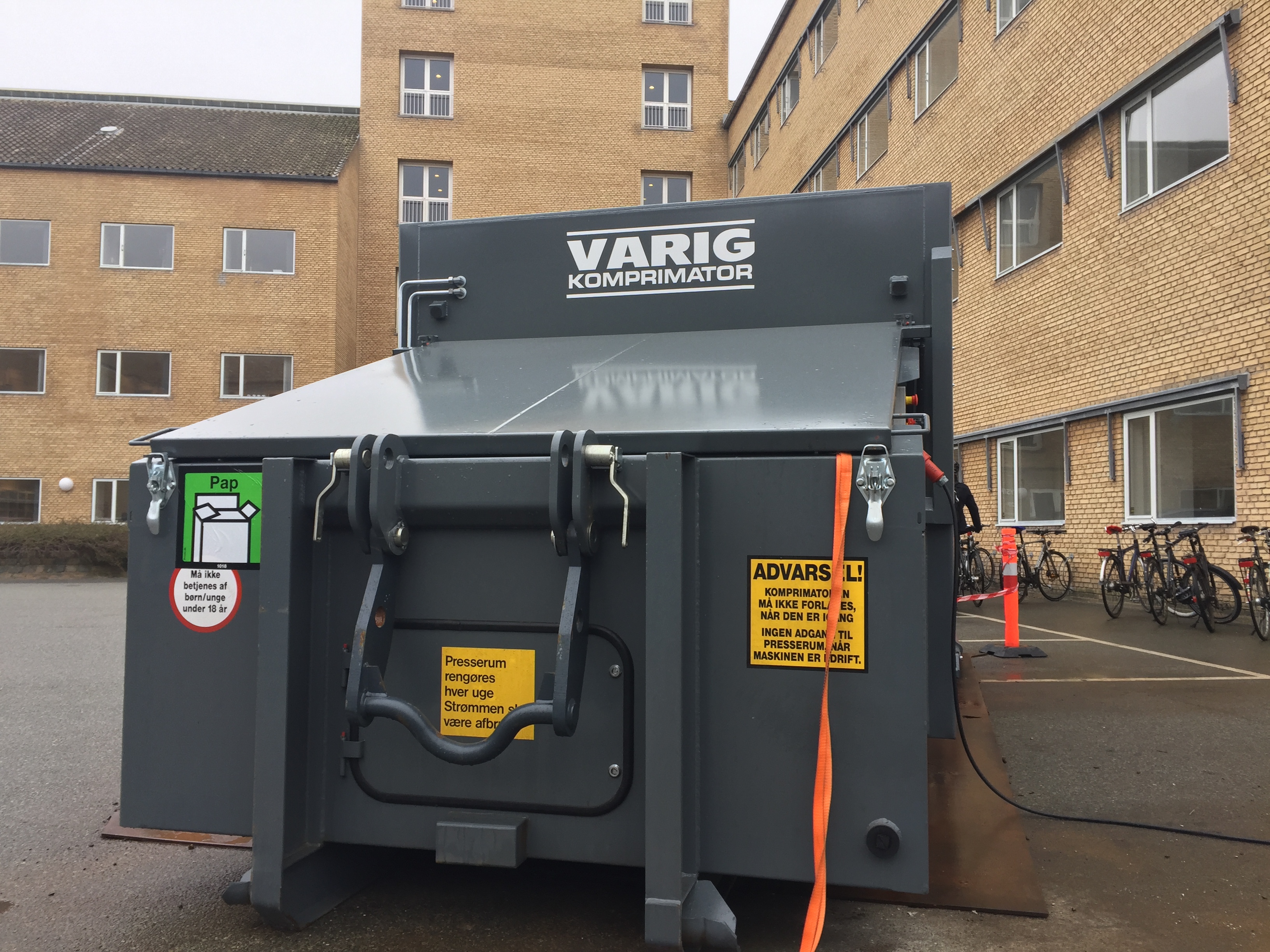Stricter requirements for sorting waste
New units for sorting waste are being set up at Science and Technology (ST). This will enable the sorting of waste materials at source – as close as possible to users. The initiative is partly due to statutory requirements and a greater focus on recycling, and partly due to cost savings at the faculty.

Staff members at ST have for a long time been good at putting paper, apple cores, batteries, and other types of waste in the right waste containers. And this is great because sorting at source by users is an important prerequisite for effective and inexpensive waste management.
In accordance with the Executive Order on Waste, commercial waste must be sorted at source in units that are as clean as possible. With the new regulations for commercial waste in the Municipality of Aarhus (applicable as of 7 December 2016), there is extra focus on recycling and material utilisation.
At ST, this means that we must be even better at separating cardboard and paper in particular, and the external logistics in the form of new compactor containers for cardboard are almost in place. ST Building Services are currently in the process of reviewing conditions in the buildings and on the individual floors, and will organise local waste sorting in close collaboration with users. This will make it as easy as possible to sort waste in the right units.
Until now, cardboard boxes have been collected in the corridors or containers (cages) at a number of places close to the users. Due to demands from the fire authorities, however, it will be necessary in some places to look at alternative locations for cardboard.
Commercial waste that is correctly sorted at source provides greater reusability and is good for the environment. It is also cheaper for ST to get rid of, and there are therefore also savings in sorting at source close to users, just as resources are saved by subsequently separating the waste.
Sorting at source is already well under way in Roskilde, Flakkebjerg, Aarslev and Foulum. There is considerable potential for savings in Aarhus, and it is necessary to incorporate the demand for sorting at source in future waste management at the faculty.
Facts about sorting at source
Waste must mainly be sorted in the following units:
- PAPER – clean paper and shredded paper for recycling
- CARDBOARD – clean cardboard boxes and pasteboard (remove plastic sleeves from delivery)
- RESIDUAL WASTE – leftover food, disposable dinnerware, plastic, ring binders, etc.
- GLASS – glass and glass bottles (no chemicals)
- BATTERIES – all types of small batteries
- BULKY WASTE – furniture and similar items
- IT & ELECTRONICS – computers, printers, phones, cables, etc.
It will be appropriate to collect plastic separately in some areas, such as places where large amounts of goods are regularly unpacked.
In connection with reviewing the buildings, an assessment will be made of where it can pay to collect plastic separately. In the same way, it can also be possible to collect styrofoam (polystyrene) separately.
In connection with clearing out large amounts of waste, you can contact your local Building Services and order a special container. This also applies to other types of bulky waste.
Find contact details for your service employee here.
For more information, please contact
Building Coordinator Rikke Thorsdatter Holtet
ST Building Services
+45 4118 93052
rth@au.dk
